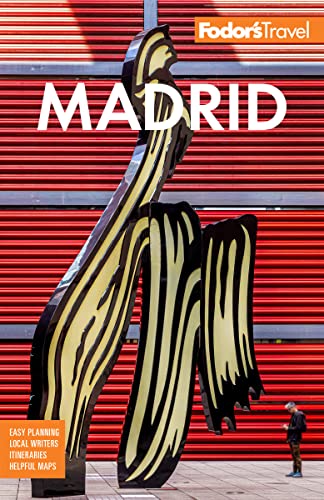Madrid's Art Walk: Paseo del Prado
Any visit to Madrid should include a stroll along Paseo del Prado, lined with world-class museums housed in majestic old buildings. You can tour the area in about two hours (longer if you visit the Prado).
The Paseo del Arte (Art Walk) pass allows you to visit the Prado, the Reina Sofía, and the Thyssen-Bornemisza for €31.90. You can buy it at any of the three museums, and you don't have to visit all of them on the same day.
The Paseo del Prado stretches from the Plaza de Cibeles to Plaza del Emperador Carlos V (also known as Plaza de Atocha) and is home to Madrid's three main art museums—the Prado, the Reina Sofía, and the Thyssen-Bornemisza—as well as the CaixaForum, an art institution with fabulous temporary exhibitions. In earlier times the Paseo marked the eastern boundary of the city, and in the 17th century it was given a cleaner neoclassical look. A century later, King Carlos III designed a leafy nature walk with glorious fountains and a botanical garden to provide respite to madrileños during the scorching summers.
Start your walk on Plaza Cánovas del Castillo, with its Fuente de Neptuno (Fountain of Neptune); on the northwestern corner is the Museo Thyssen-Bornemisza. To your left, across from the plaza, is the elegant Ritz hotel (under renovation since 2018 and reopening in 2020 as a Mandarin-Oriental property), alongside the obelisk dedicated to those who have died for Spain, and across from it on the right is the Museo del Prado, the best example of neoclassical architecture in the city and one of the world's best-known museums. It was enlarged in 2007 with the addition of what's widely known as "Moneo's cube," architect Rafael Moneo's steel-and-glass building that now encloses the cloister of the old Monasterio de los Jerónimos. The monastery, by far the oldest building in this part of town (built in 1503), is dwarfed by the museum. It once sat at the core of the Parque del Buen Retiro (the park stretched as far as the Paseo del Prado until the 19th century, when Queen Isabel II sold a third of its terrain to the state) and is the reason for the park's name: the monastery is where the Habsburg kings would temporarily "retire" from their state affairs. The park, always bustling, is a great place to unwind after sightseeing.
To the right of the Prado, across from the Murillo Gate, is the Jardín Botánico, also a wonderful place to relax with a book or to sketch in the shade of an exotic tree. Across the street is a sloping plaza that leads to the CaixaForum.
The Paseo del Prado ends by the Estación de Atocha, a train station resembling the overturned hull of a ship. To its west, across from Calle Atocha, lies the Centro de Arte Reina Sofía, Madrid's modern art museum and the home of Picasso's Guernica.




